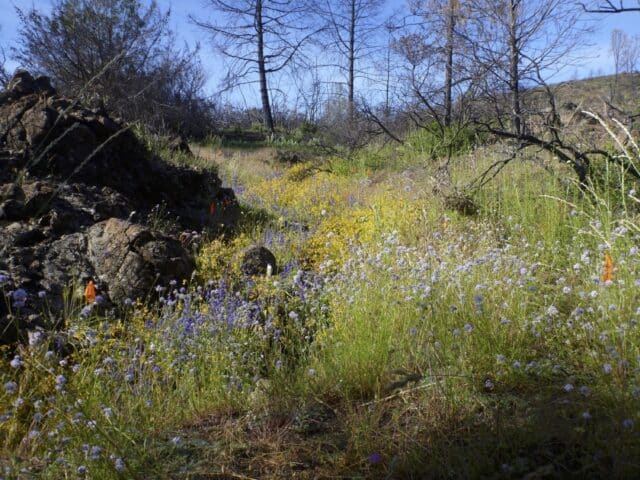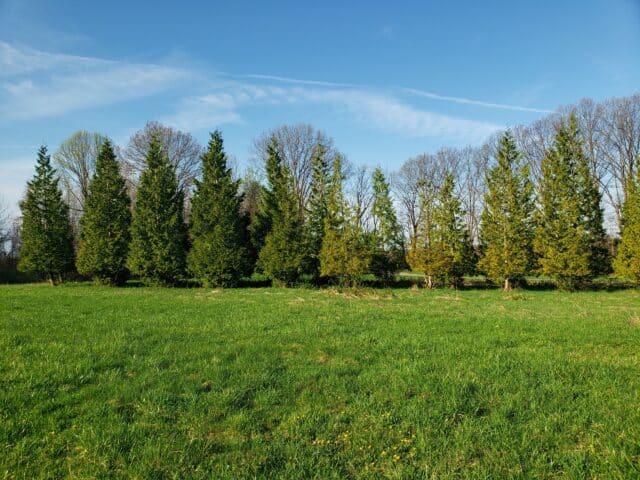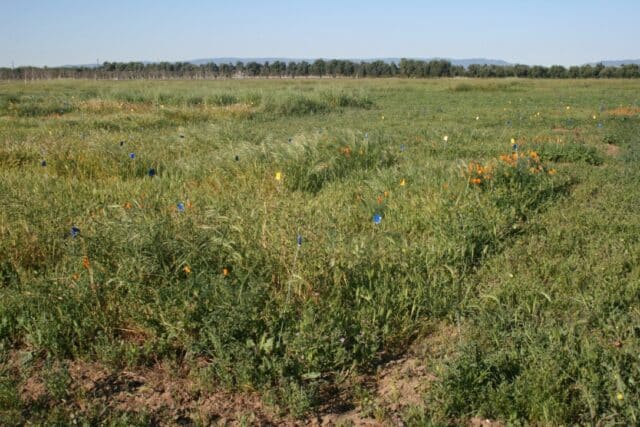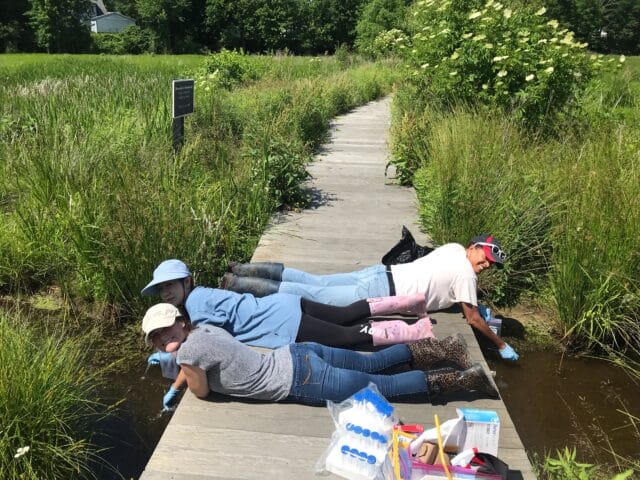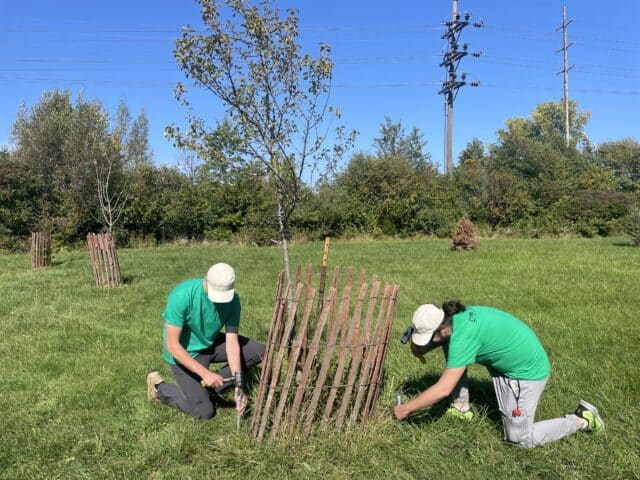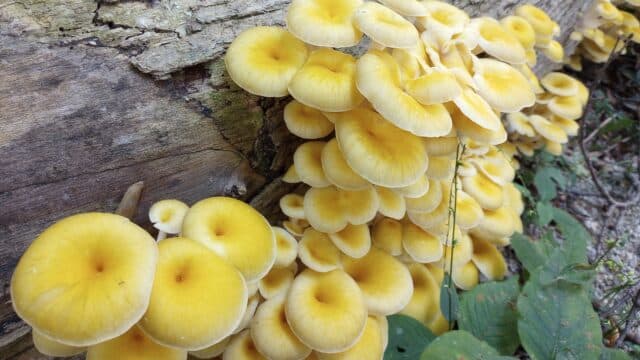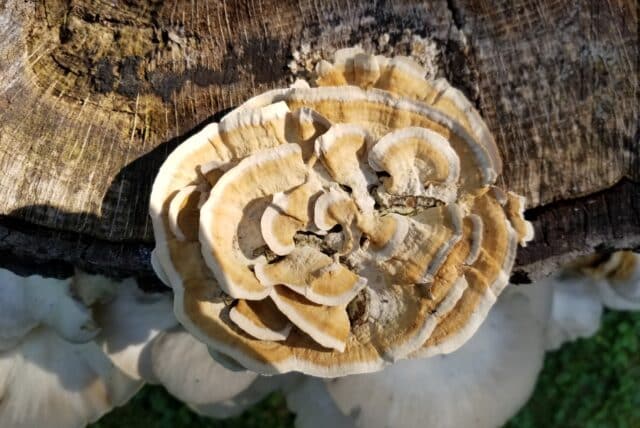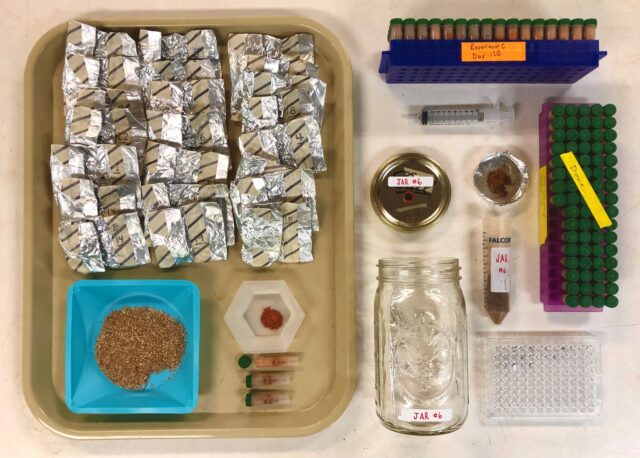
By Emma Dawson-Glass, Research Specialist
Spring is underway here in Northeast Ohio, meaning it’s time for the Stuble lab and our team of wonderful volunteers to get out in Bole Woods and start monitoring spring phenology. For those unfamiliar, phenology is the study of the timing of natural phenomena as it relates to seasonal changes. In our case, we’re monitoring the phenology of spring ephemerals—the wildflowers that come up in forest understories during the spring while the canopy is still open. We specifically watch some of the most iconic Ohio spring wildflowers: trillium, trout lily, squirrel corn, and Dutchman’s breeches, tracking their emergence, flowering, and seed production throughout the spring. We also watch the forest canopy, to see when and how quickly it closes.
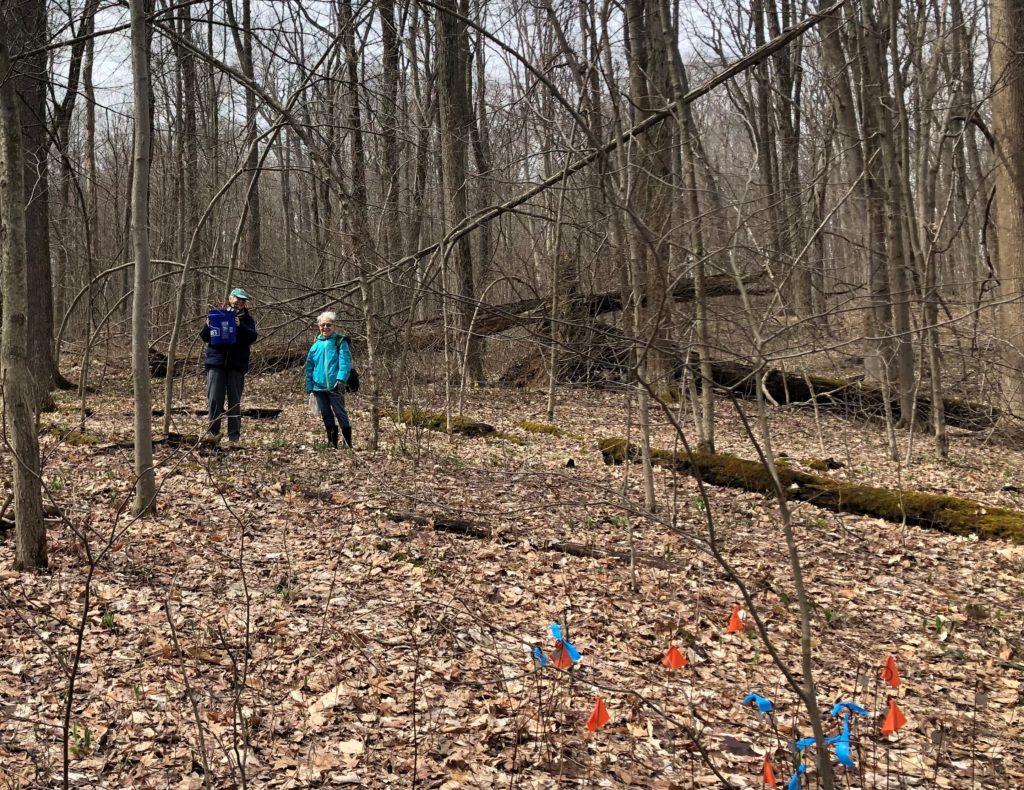
Plant phenology is very responsive to environmental cues like temperature, weather, and light availability. Watching the ephemerals and forest canopy can clue us in to important ecosystem changes due to climate change. With this data, we can ask questions like: How is spring ephemeral phenology responding to changes in spring weather? What about the forest canopy? Do shifts in the timing of canopy closure mean ephemerals will have more or less time in the sun throughout the spring transition? To answer these questions, we need good data. And to get good data, we like to keep an eye on the weather to see if we can anticipate when big flushes of ephemerals are likely to emerge.
The adage “If you don’t like the weather in Ohio now, just wait a few minutes” has proven true again this spring. Despite this saying, these days, it seems that the transition from winter to spring to summer has become more tumultuous, with the unseasonable becoming the norm. I remember when I was a kid in Cleveland Heights, you could usually rely on snow or at least a need for heavy jackets through early April. That was not the case last year, in 2021, when temperatures shot up to the 70°’s in mid-March and stayed warm. We found that, tracking with that warm spring, our spring ephemerals emerged roughly 2 weeks earlier than when we first started monitoring back in 2018. Most appeared in late March/early April, culminating in a canopy that closed in mid-May.
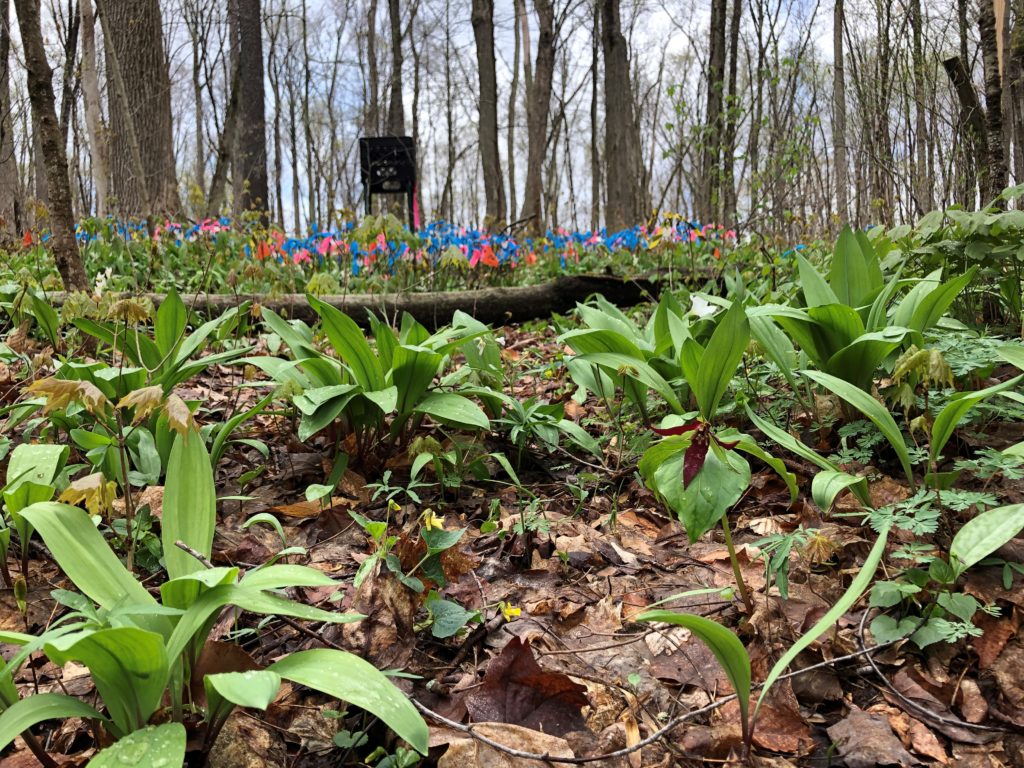
On the contrary, this year, we’ve had a chilly, snowy winter, followed by a crisp spring peppered with everything from 70° days to more than an inch of snow. As a result, we’ve seen a sleepy, stuttering start to wildflower emergence, with a few trout lilies popping up at the end of March but most of our populations currently still in the ground. With warmer weather and wet conditions, we anticipate the coming weeks will bring a flush of ephemerals.
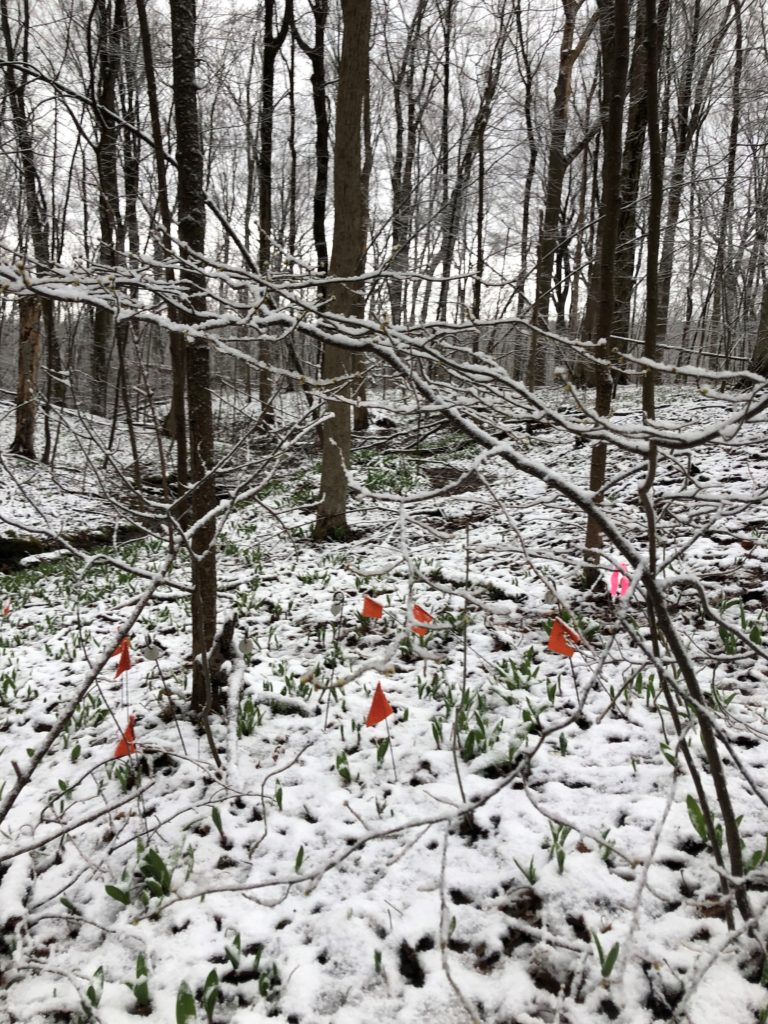
All of this is to say that, when it comes to climate change, things may not always be straightforward. Conventional wisdom states that, with climate change, we should expect warmer temperatures. This is true in the aggregate, but on the day-to-day, it seems what we can expect is the unexpected. Climate change may not always mean a balmy spring. Rather, it may mean a spring that bounces from cold to unusually warm to downright freezing. Monitoring spring ephemerals and the forest canopy means we will be able to understand how these raucous changes affect our woodland communities.
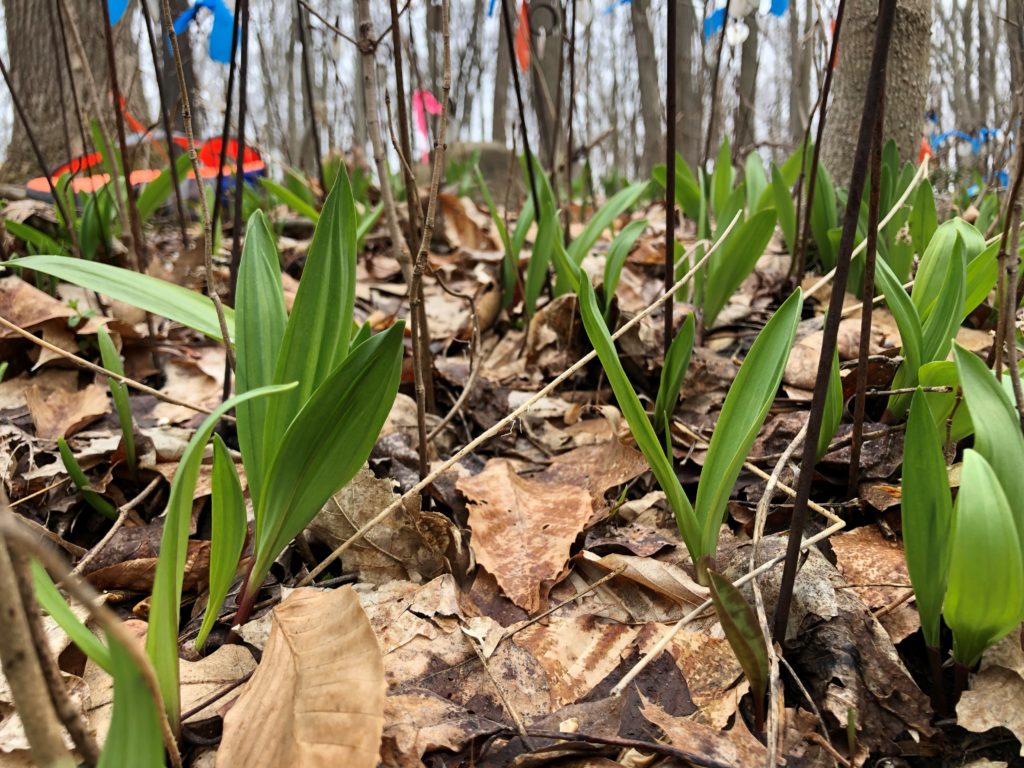
As surveys get underway in this our 5th year of monitoring, expect more updates on our findings in Bole Woods soon. Until then, stay warm, cool, dry, humidified, and above all, curious this spring. Oh—and watch out for that wind!
